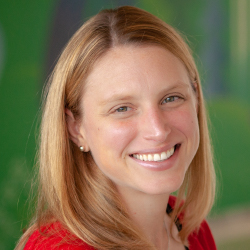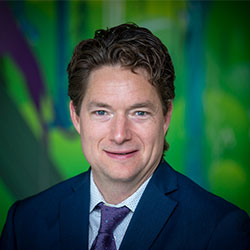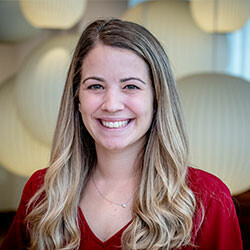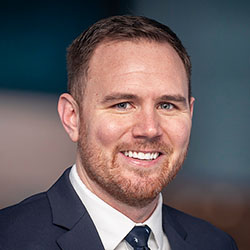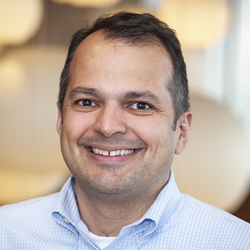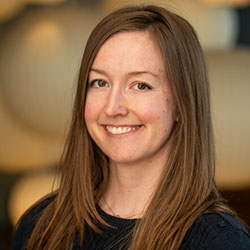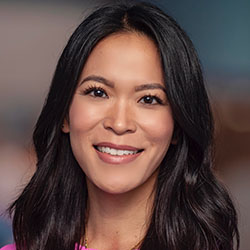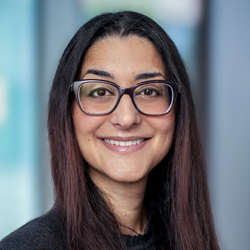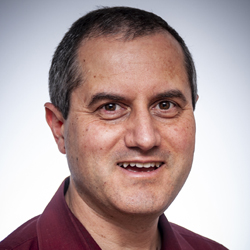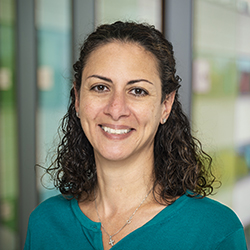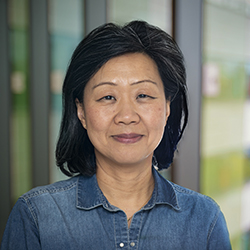Neuroblastoma
-
Schedule an appointment with the Cancer and Blood Disorders Center
- If you would like an appointment, ask your child’s primary care provider for a referral.
- For appointments in Seattle, call 206-987-2106 or email us.
- How to schedule
- Need a second opinion? Call 206-987-2106 or email us.
If this is a medical emergency, call 911.
-
Find a doctor
-
Locations
- Seattle Children’s hospital campus: 206-987-2106
-
Refer a patient
- Urgent consultations (providers only): call 206-987-7777 or, toll-free, 877-985-4637.
- If you are a provider, fax a New Appointment Request Form (NARF) (PDF) (DOC) to 206-985-3121 or 866-985-3121 (toll-free).
- No pre-referral work-up is required for most conditions. If you have already done a work-up, please fax this information as well as relevant clinic notes and the NARF to 206-985-3121 or 866-985-3121 (toll-free).
- View our complete Cancer and Blood Disorders Center referral guidelines.
What is neuroblastoma?
Neuroblastoma is cancer that starts in young nerve cells called neuroblasts. In a healthy child, these cells become the nerves that control functions like heartbeat and blood pressure. In neuroblastoma, some of the neuroblasts do not mature. Instead, they grow into tumors.
Doctors do not know what causes the changes in cells that lead to this disease.
Many families have never heard of neuroblastoma before their child develops it. Doctors at our Neuroblastoma Program are known worldwide for treating babies, children, teens and young adults with this condition.
The Neuroblastoma Program is part of our Cancer and Blood Disorders Center at Seattle Children’s. If you would like an appointment, ask your primary care provider to refer you.
If you have a referral or would like a second opinion, contact the center at 206-987-2106.
Providers, see how to refer a patient.
Why choose Seattle Children’s for neuroblastoma care?
-
Experts at treating all stages and risk levels of neuroblastoma
- Our doctors help set national standards for neuroblastoma care. They are global leaders in developing new treatments for children at all stages and risk levels of the disease. Risk level refers to how hard the neuroblastoma is to treat.
- If your child’s treatment includes a bone marrow transplant, we perform the transplant here at Seattle Children’s, working closely with our partner Fred Hutchinson Cancer Center. Fred Hutch pioneered bone marrow transplants and is one of the largest transplant centers in the world.
-
The most advanced therapies and clinical trials, including immunotherapy
Seattle Children’s is the only center in the Pacific Northwest that belongs to NANT (New Approaches to Neuroblastoma Therapy). NANT works to find new treatments for patients with neuroblastoma that is not well controlled by treatment or comes back. Dr. Navin Pinto is the lead investigator of NANT clinical trials at Seattle Children’s.
As leaders in neuroblastoma research, we can offer the very latest treatments being studied in clinical trials. The newest (phase 1) treatment options are especially important if your child’s neuroblastoma:
- Is high risk
- Resists treatment
- Comes back after treatment
At Seattle Children’s, our current research studies include:
- Reprogramming the body’s infection-fighting T cells to find and destroy neuroblastoma cells. Learn more about phase 1 clinical trials STRIvE. We have one of the nation’s largest pipelines of CAR T-cell immunotherapy trials for children and young adults.
- A way to get radiation therapy inside your child’s body and into their cancer cells via the bloodstream. Learn more about I-131-MIBG.
- New mixtures of anticancer (chemotherapy) medicines.
- Combining targeted therapies with chemotherapy or radiation.
- Studies to identify biomarkers that could lead to new targeted therapies for some forms of neuroblastoma.
-
Among the nation’s best cancer programs
- Survival rates for children we treat for neuroblastoma are better than the national average.
- Your child will benefit from the work of physician-scientists at Fred Hutchinson Cancer Center and UW Medicine, as well as at Seattle Children’s. The National Cancer Institute has named our partnership a comprehensive cancer center.
-
Specialists in caring for newborns through young adults
- Our specialty is treating children’s disease while helping them grow up to be healthy and productive adults.
- A team of caring experts will focus on your whole child. We don’t just treat their cancer.
- As needed, your child will receive care from specialists in nutrition, pain management, pharmacy, palliative care, physical therapy and emotional health. Read more about the supportive care we offer.
- Children do not react to illness, pain and medicine in the same way as adults. They need — and deserve — care designed just for them. Our experts focus on how treatments today affect growing bodies in the future. We plan your child’s treatment based on years of experience and the newest research on what works best — and most safely — for children.
- We know that teens and young adults with cancer have different challenges than young children. Our Adolescent and Young Adult Cancer Program focuses on their needs, which may include fertility preservation.
-
Support for your whole family
- A diagnosis of neuroblastoma can be scary. We help take positive steps right away by offering appointments within 1 to 3 days to children who might have cancer. If needs are not urgent, new patients can be seen in 1 to 2 weeks.
- During visits, we take time to explain your child’s condition. We help you fully understand your treatment options and make the choices that are right for your family.
- Our doctors, nurses, child life specialists and social workers help your child and your family through the challenges of their illness. We connect you to community resources and support groups.
- At Seattle Children's, we work with many children and families from around the Northwest and beyond. Whether you live nearby or far away, we can help with financial counseling, schooling, housing, transportation, interpreter services and spiritual care. Read about our services for patients and families.
Symptoms of Neuroblastoma
In most cases, parents and doctors do not know the disease is there until tumors grow large enough to be felt or to cause symptoms.
Symptoms of neuroblastoma depend on where the tumor or tumors are. Most often, neuroblastoma tumors start in the nerves of the adrenal glands, which sit on top of the kidneys. But these tumors can start in any part of the body. The chest, neck, pelvis and spinal cord are other common places.
These symptoms can be caused by neuroblastoma or other health problems. Check with a doctor if your child has:
- A lump that you can see or feel
- Pain or weakness in some part of the body
- Enlarged belly or trouble having a bowel movement
- Feeling tired, crabby or short of breath
- Being dizzy, lightheaded or paler than usual
- Bulging eyes or dark circles around the eyes
Diagnosing Neuroblastoma
To diagnose your child, the doctor will:
- Do an exam to look for signs of cancer
- Ask about your child's health
Your child’s doctor may also:
- Test your child’s blood to check levels of chemicals that are made or increased by neuroblastoma.
- Ask about your child's thinking and movement.
- Do simple tests to check their muscles, reflexes and coordination. These tell the doctor if there are problems with your child’s nervous system.
If your child may have neuroblastoma, other tests will help tell the risk level and if it has spread.
Risk Levels and Stages of Neuroblastoma
Doctors determine your child’s cancer risk level and stage so they can plan the best treatment.
-
Risk levels
Risk level refers to how hard the neuroblastoma is to treat.
Low-risk and intermediate-risk neuroblastoma have a good chance of being cured. High-risk neuroblastoma is very hard to cure.
The risk group is based on:
- Your child’s age when doctors diagnose the disease
- The stage of their disease
- Features of their cancer cells
Your child’s doctor will explain your child’s risk level.
-
Stages
It is important to find out if cancer is only in 1 place or has spread. This process is called staging.
Stages are based on whether:
- There are tumors in more than 1 place
- Surgeons can remove all of the tumor that they can see
- The cancer has spread and where
- The cancer affects their lymph nodes
-
Tests
To help tell the stage of your child’s neuroblastoma and plan the best treatment, doctors will:
- Remove a small sample of tissue to check under a microscope. This is called bone marrow aspiration or biopsy. It shows if neuroblastoma has spread to the soft inner part of bone (bone marrow).
- Take pictures inside your child’s body (imaging studies) to look for tumors or places where cancer is active. Pictures may be made using:
- X-rays
- CT (computed tomography) scan
- MRI (magnetic resonance imaging) scan
- MIBG (metaiodobenzylguanidine) scan
- Positron emission tomography (PET) scan
Treatment Options for Neuroblastoma
Our focus is helping your child beat their disease and thrive. Everyone in the Neuroblastoma Program works to cure your child’s disease, support your family during treatment, prevent serious side effects and provide follow-up care.
We are experienced in treating children, teens and young adults with all risk levels and stages of disease. Your child's treatment will depend on:
- Whether their neuroblastoma is low, intermediate or high risk
- How well it responds to first treatment
- Whether it comes back after treatment (recurrent)
We offer these options:
-
Surgery
Most children with neuroblastoma have surgery. The first surgery your child has may be a biopsy. This means doctors remove a small sample of tumor cells to check for cancer.
Doctors will remove as much of the tumor as possible. This depends on where the cancer is and its risk level. Sometimes, the tumor is removed during the same surgery as the biopsy.
In some children, the tumor has spread to other places in the body or is too large to remove safely during the biopsy. In this case, after the biopsy and diagnosis, your child will receive chemotherapy to help control the tumor. Later, surgeons remove as much of the tumor as possible. Studies have shown excellent results in low- and intermediate-risk neuroblastoma even if the whole tumor is not removed.
Even when doctors can remove the whole tumor, they may suspect or know that cancer cells are still in your child’s body. They often use chemotherapy, radiation or both to kill any cancer cells that are left.
Your child will get medicine to make them sleep without pain (general anesthesia) during surgery. Surgery is performed at our hospital campus in Seattle.
Learn more about surgery to treat cancer at Seattle Children’s.
-
Whole body chemotherapy
Whole-body (systemic) chemotherapy means giving medicines that go throughout your child’s body to kill cancer cells. For neuroblastoma, the medicine most likely will be injected into your child’s vein. This is called an intravenous (IV) infusion.
Your child’s doctors may suggest whole-body chemotherapy:
- As the main treatment
- To help shrink a tumor before another type of treatment, such as surgery
- To kill any cancer cells that have spread to other parts of your child’s body
Children with neuroblastoma receive chemotherapy at our hospital campus in Seattle:
- Most often, while they stay in our 48-bed Cancer and Blood Disorders Center - Inpatient (as an inpatient)
- Sometimes, in our outpatient infusion unit (by clinic visits as a day procedure)
The mix of medicines and how long they are given depend on the type of neuroblastoma your child has. Researchers are studying new mixes of medicines to find the ones that work best against each type of neuroblastoma.
See more about getting chemotherapy at Seattle Children’s.
-
Radiation therapy using X-rays or protons
Radiation therapy uses high-energy particles to kill cancer cells. A machine sends a dose of radiation into the body. Doctors aim the radiation at the place where they know or suspect there is cancer.
We treat neuroblastoma using X-rays and proton therapy. The best radiation treatment for your child depends on their tumor.
-
I-131-MIBG therapy
Seattle Children’s has the ability to give a form of treatment that gets radiation into your child’s cancer cells via the bloodstream. This type of radiation is called I-131-MIBG therapy.
Radioactive iodine is attached to a chemical called MIBG that targets neuroblastoma tumors. Your child receives this infusion through a vein.
Our doctors have worked with the research groups COG and NANT to offer this therapy to children with high-risk neuroblastoma that does not respond well to treatment or that comes back. Seattle Children’s doctors also are studying whether I-131-MIBG therapy will benefit children who are newly diagnosed with high-risk neuroblastoma.
-
High-dose chemotherapy and bone marrow transplant
If your child has high-risk neuroblastoma, they may get very high doses of chemotherapy medicines and a transplant of their own bone marrow. This is called an autologous bone marrow transplant.
High-dose chemotherapy treats tumors more effectively than lower-dose chemotherapy. But the drugs damage the bone marrow’s ability to make new blood cells. That is why your child needs an infusion of their healthy cells, which have been removed from your child’s body and stored before high-dose chemotherapy.
A second transplant, using cells from a healthy donor, is now part of standard therapy for children with high-risk neuroblastoma. A national phase 3 COG clinical trial showed that the double transplant significantly improved patients’ 3-year survival.
We do the transplants here at Seattle Children’s, working closely with our partner Fred Hutch. Learn more about our Pediatric Blood and Marrow Transplant Program.
After transplant, your child will get 6 more months of treatment. The aim is to kill any cancer cells that may regrow and cause the disease to come back.
-
Clinical trials
Many of our patients with neuroblastoma take part in research studies along with their standard medical treatment. These studies are called clinical trials.
Our national leadership in neuroblastoma research means more options for children with high-risk, refractory or recurrent neuroblastoma. These options are not offered at most treatment centers.
Your child’s doctor will talk with you about any new treatment options that might help your child. Then you can decide if you want your child to take part in a research study. It’s your choice.
- Learn about our phase 1 clinical trials — STRIvE — that reprogram the body’s infection-fighting T cells to find and destroy neuroblastoma cells.
- Find many clinical trials offered at Seattle Children’s on our Current Research Studies page or on ClinicalTrials.gov. Read our guide about searching for trials on ClinicalTrials.gov (PDF).
- Contact us at 206-987-2106.
- Email us.
- Read more about cancer research and clinical trials at Seattle Children’s.
Follow-Up Care
Follow-up care is important after treatment ends — no matter what type of treatment your child had. The follow-up routine will depend on your child’s cancer and their treatments. Most children visit every 3 to 12 months for 5 years.
Most children come to Seattle Children’s hospital campus for follow-up care. If you live far from Seattle, your child may get some follow-up care from a cancer doctor in your own community.
During follow-up visits we will check your child for:
- Any signs that neuroblastoma is returning
- Effects that may happen months or years after treatment
Our Cancer Survivor Program provides long-term follow-up care to help young people stay healthy after being treated for cancer in childhood.
What to Expect
See how to prepare and what to expect when coming to Seattle Children’s Cancer and Blood Disorders Center.
Neuroblastoma Team
Oncologists
Our Neuroblastoma Program is led by doctors with special training in diagnosing, treating and preventing blood diseases and cancers. That branch of medicine is called hematology-oncology.
Neuroblastoma Program nuclear medicine doctors
Our team includes doctors specially trained to use radioactive substances to diagnose, treat and research illness.
Neuroblastoma Program radiation oncologist
Our radiation oncologist is highly trained in using high-energy beams to treat cancer, tumors and other diseases.
Neuroblastoma Program advanced practice providers
Advanced practice providers include advanced registered nurse practitioners (ARNPs) and physician assistants (PAs). They work closely with doctors and can provide care independently. These providers diagnose and treat patients and can prescribe medicines. All during your child's treatment, they can answer questions, share advice and teach patients and families.
Neuroblastoma Program nuclear medicine technologists
Our nuclear medicine technologists prepare radioactive material. It is used to make images of the inside of your child’s body. The images help doctors diagnose disease and track treatment.
-
Lisa Aldape, CNMT, Nuclear Medicine PET/CT supervisor
Contact Us
If you would like an appointment, ask your child’s primary care provider to refer you.
If you have a referral or would like a second opinion, contact the Cancer and Blood Disorders Center at 206-987-2106 or by email.
Providers, see how to refer a patient.
Scheduling an appointment
- How to schedule an appointment at Seattle Children’s.
- If you already have an appointment, learn more about how to prepare.
- Learn about resources such as useful links, videos and recommended reading for you and your family.
Providers, see how to refer a patient.
Telemedicine at Seattle Children’s
You may be offered a telehealth (virtual) appointment. Learn more.
Related Links
Paying for Care
Learn about paying for care at Seattle Children’s, including insurance coverage, billing and financial assistance.
For Healthcare Professionals
-
Schedule an appointment with the Cancer and Blood Disorders Center
- If you would like an appointment, ask your child’s primary care provider for a referral.
- For appointments in Seattle, call 206-987-2106 or email us.
- How to schedule
- Need a second opinion? Call 206-987-2106 or email us.
If this is a medical emergency, call 911.
-
Find a doctor
-
Locations
- Seattle Children’s hospital campus: 206-987-2106
-
Refer a patient
- Urgent consultations (providers only): call 206-987-7777 or, toll-free, 877-985-4637.
- If you are a provider, fax a New Appointment Request Form (NARF) (PDF) (DOC) to 206-985-3121 or 866-985-3121 (toll-free).
- No pre-referral work-up is required for most conditions. If you have already done a work-up, please fax this information as well as relevant clinic notes and the NARF to 206-985-3121 or 866-985-3121 (toll-free).
- View our complete Cancer and Blood Disorders Center referral guidelines.
